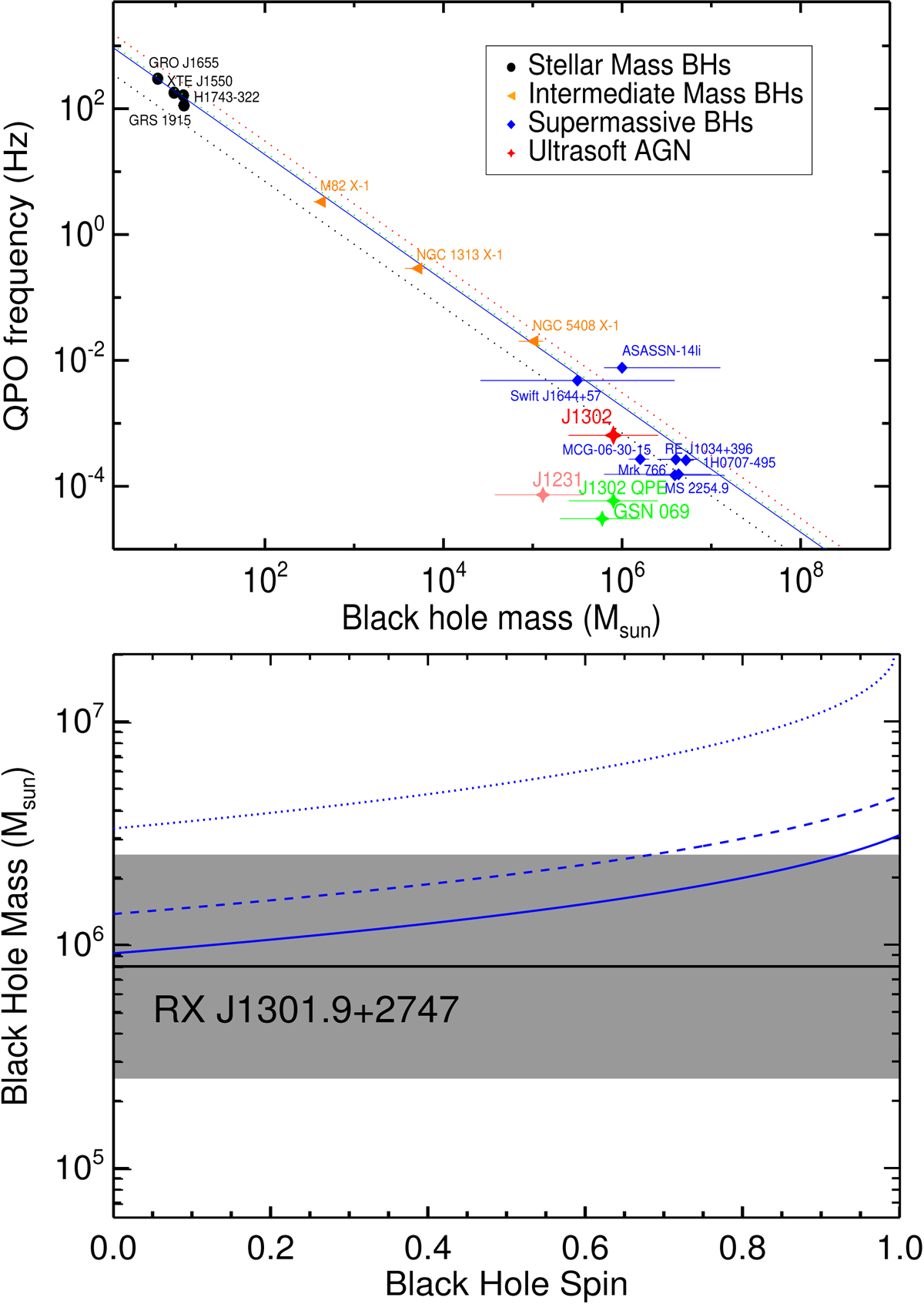Fig. 3.

Upper: relation between QPO frequency and BH mass. Following Pan et al. (2016), we updated the relation to include more recent QPO detections in NLSy1 MS2254.9−3712 (Alston et al. 2015), Mrk 766 (Zhang et al. 2017), and MCG -6-30-15 (Gupta et al. 2018), TDE ASASSN 14li (Pasham et al. 2019), ultrasoft AGN J1231 (Lin et al. 2013), and J1302 (this work). The two TDEs, ASASSN 14li and Swift J1644+57, have higher QPO frequencies and lower BH masses in comparison to AGNs. As a comparison, we also overplot the frequencies for QPEs (green symbols, Miniutti et al. 2019; Giustini et al. 2020). Lower: relation between BH mass and dimensionless spin parameter assuming that the QPO originates from the 3:2 twin frequency disk resonance (see text for details). Only the case for the prograde orbit is shown. Solid and dashed lines represent cases in which the observed QPO frequency of J1302 corresponds to the radial and vertical epicyclic frequencies, respectively. For comparison, we also show the relation by assuming that the QPO frequency is the Keplerian frequency at ISCO (dotted line). Grey shaded region shows the J1302’s BH mass range ([0.25−2.5]×106 M⊙, Sun13) and the thick black line represents the best estimate on the BH mass (8 × 105 M⊙).
Current usage metrics show cumulative count of Article Views (full-text article views including HTML views, PDF and ePub downloads, according to the available data) and Abstracts Views on Vision4Press platform.
Data correspond to usage on the plateform after 2015. The current usage metrics is available 48-96 hours after online publication and is updated daily on week days.
Initial download of the metrics may take a while.


